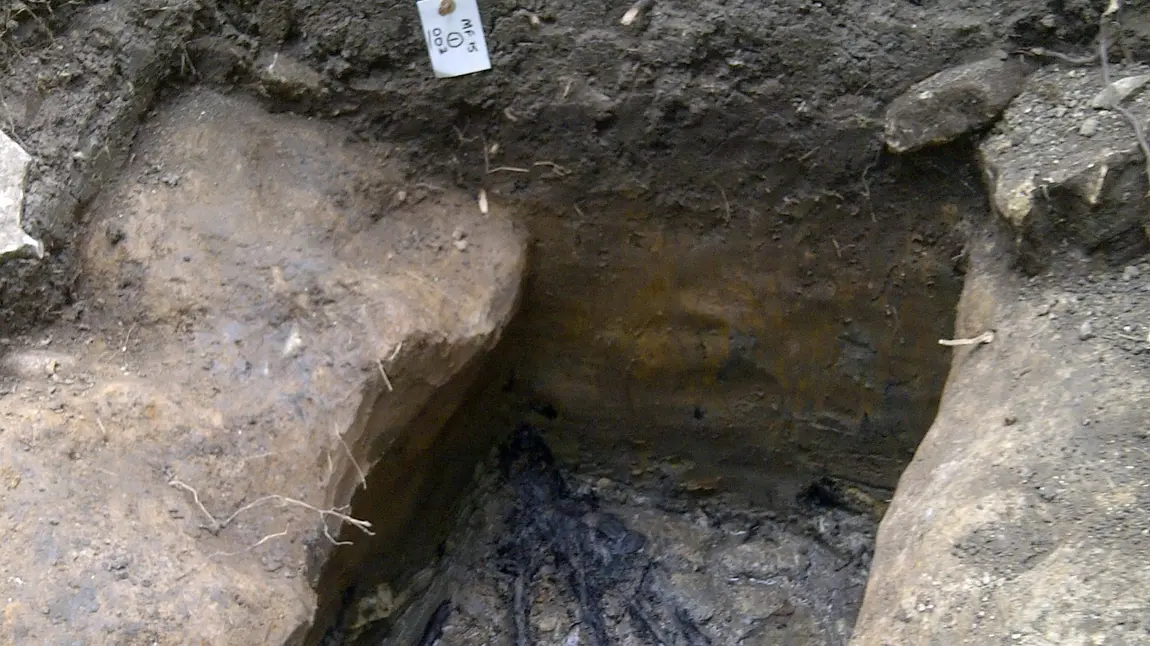Ice Age error overshadows spectacular Medieval discovery

“It was my fault; we over dug it!” apologised Simon Tomson, Site Director of Archaeology, to the volunteers at the daily review tour of the Heritage Lottery Fund (HLF) project Finding Fryston in the woodlands of Monk Fryston Hall. Simon was referring to the black spider like item sitting in the bottom of the trench. He went on to explain that it was the carbonised remains of a small tree that had been growing on the edge of the Ice Age glacial Lake Humber and volunteer Mark Lovett had been asked to excavate a negative feature, probably a Victorian ditch, but had gone too deep, stopping only when he came to natural geology and our Ice Age tree, which dates from between 8,000-10,000BC.
Project Manager, Ray Newton commented, “Whilst excavating the site we have found two Neolithic flint cores, brought from the Wolds dating from around 2500BC; these items gave us an inkling that this waterside area has been used for a long time, but to find something which is clearly identifiable to everyone from the ice age is remarkable. Not everyone recognised the tree; some likened it to a dinosaur claw or a giant spider!”
"The community project, has certainly discovered more about the heritage of Monk Fryston village and is providing opportunities for people of all ages to get involved. So far over 70 people have trained in excavation, finds handling or site planning. Visitors at the last Open Day commented that the excavation was brilliant. They particularly liked the rutted medieval road found by the hard working volunteer excavators and remarked that it was better than Time Team on TV as you didn’t need the screen graphics to work out what it was!
The medieval road was used for hauling stone from village quarries to a waterside loading area for shipping to Selby to build the Abbey and its numerous churches and monastic buildings in the area. Deputy Project Manager, Richard Cawthorne, added “We have a really productive site; we thought that the road was spectacular; then we found the flint cores and then the Ice Age tree which is really special. We just wonder what will be next!”
Anyone who is interested in the past and their local history is urged to visit the site on the final free public Open Day on Saturday 8 August before the site shuts down on 10 August.
The Open Day is also the final day of St Wilfrid’s Medieval Festival week, which itself is part of the month long Yorkvik Medieval Festival this August. Details can be found on the Finding Fryston website and there is still the opportunity for anyone who is interested to sign up and have a go to try their hand at archaeology.
Further information
Susan Newton, at Monk Fryston Time Team, on tel: 01977 682 084 or email: susi_newton28@hotmail.com
